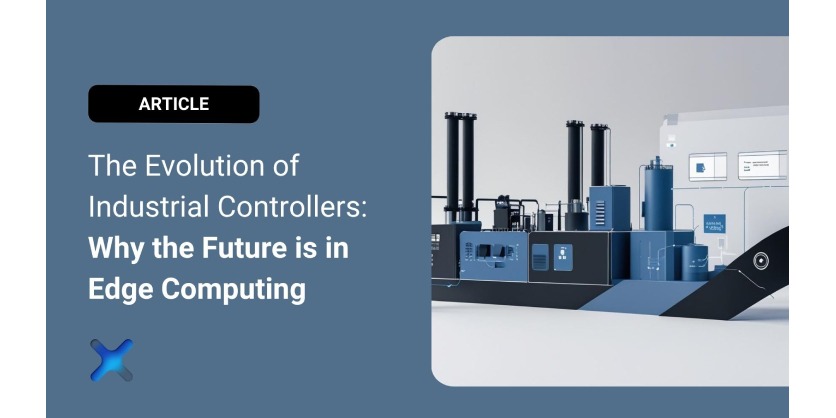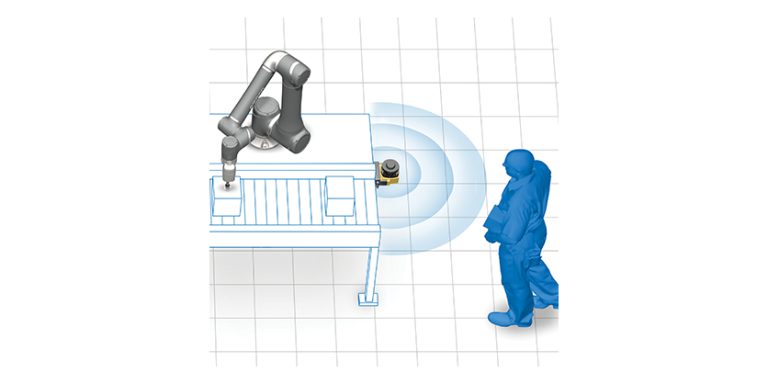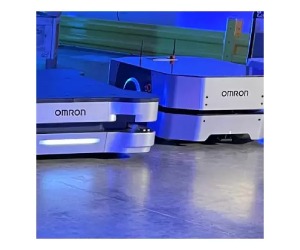The Evolution of Industrial Controllers: Why the Future is in Edge Computing
August 13, 2025

Industrial controllers, such as PLCs (Programmable Logic Controllers) and PACs (Programmable Automation Controllers), have long been the backbone of industrial automation, processing data on-site with limited connectivity beyond factory walls. However, as factories become smarter and more interconnected, Edge Computing is transforming how data is processed, enabling faster, more efficient decision-making at the point of data collection.
EXOR explores why this shift is happening, and how Edge Computing can elevate your industrial automation systems.
The Shift from Traditional Controllers to Edge Computing
Traditional Controllers, like PLCs and PACs, are designed to process data on-site but often rely on centralized SCADA (Supervisory Control and Data Acquisition) systems for data aggregation.
Some of the key challenges with these traditional systems include:
- Process data locally with minimal cloud integration. This can restrict the ability to leverage real-time analytics and remote monitoring.
- Require centralized SCADA systems for data aggregation, which can introduce delays in data transfer and decision-making.
- Scalability Constraints: as factories scale up with IIoT (Industrial Internet of Things) devices, traditional systems struggle to handle the sheer volume and variety of data.
Edge Computing Controllers, on the other hand, processes data closer to the source (i.e., directly at the device or machine level), reducing latency and enabling real-time decision-making.
Edge-enabled industrial controllers are becoming increasingly prevalent, offering numerous advantages:
- Faster Response Times: By processing data on-site, Edge Computing reduces the time it takes to respond to changes in the production line or machinery, a crucial factor for mission-critical operations.
- Reduced Cloud Dependency: With Edge Computing, essential data is processed locally, allowing operations to continue even if cloud connectivity is lost or interrupted.
- Improved Bandwidth Efficiency: Instead of sending all raw data to the cloud, Edge Computing filters and analyzes data locally, transmitting only relevant information, thereby optimizing bandwidth usage.
- Seamless Integration with IIoT: Edge controllers can easily integrate with modern IIoT devices, enabling predictive maintenance and enhancing overall system performance.
The Role of Edge Computing in Industry 4.0
Edge Computing is at the heart of Industry 4.0, driving the transformation of factories into smart, interconnected, and data-driven environments. By processing data at the edge, closer to the source, manufacturers can unlock significant advantages that support more efficient and agile operations.
Key benefits of Edge Computing in Industry 4.0 include:
- Predictive Maintenance: By analyzing data locally, manufacturers can anticipate potential equipment failures before they occur, significantly reducing downtime and costly repairs.
- Real-time Analytics: Edge computing enables immediate data processing on-site, providing instant insights that drive faster decision-making and enhanced operational flexibility.
- Autonomous Systems: With real-time data at their fingertips, systems can make independent decisions, automating processes and improving both operational efficiency and responsiveness.
As the industrial landscape becomes increasingly digital, Edge Computing will continue to play a pivotal role in the evolution of manufacturing.
Why Edge Management complements Edge Computing?
Edge Management is essential when scaling and maintaining Edge Computing solutions. While edge devices handle data locally, significantly reducing latency, their real potential is unlocked when integrated and managed effectively across an organization. A comprehensive edge management framework ensures that systems perform optimally, stay secure, and remain reliable over time. With the right management tools, businesses can gain full control over their edge-enabled infrastructure, monitor device health, and implement timely updates.
For example Corvina’s Edge Management solution, CEM (Corvina Edge Manager), helps organizations streamline the deployment and maintenance of their Edge computing infrastructure, providing tools to enhance system performance, security, and scalability.
Conclusion
Industrial controllers are evolving, and edge Computing is at the heart of this transformation. Companies looking to modernize their automation infrastructure should explore edge-enabled controllers to enhance efficiency, security, and scalability.
More Information
Are you ready to unlock the full potential of edge computing in your operations? Discover how EXOR’s advanced, tailored edge solutions can help you stay ahead with technology designed for your specific needs. Talk to their experts today


